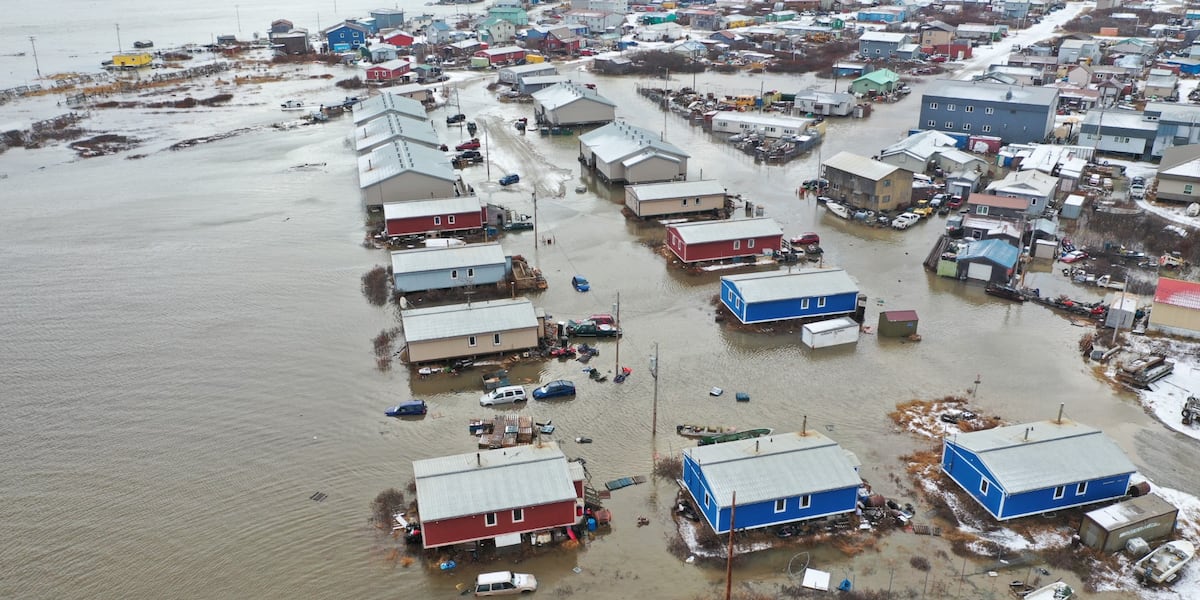The state Supreme Court on Tuesday will hear oral arguments in a case that could force oil company Hilcorp to release financial information that it was allowed to keep secret when it acquired BP’s Alaska assets for $5.6 billion in 2020.
The city of Valdez brought the case, represented by Robin Brena, a longtime oil and gas attorney in Alaska. Valdez is challenging a decision by the Regulatory Commission of Alaska permitting the company to keep its financial statements out of the public eye.
The state agency made the decision in 2020, as it approved the transfer of regulatory approvals related to BP’s interest in the trans-Alaska pipeline system to a Hilcorp affiliate, Harvest Alaska, as part of the blockbuster deal. The transfer drew wide public interest, generating more than 300 comments.
Valdez, home to Valdez Marine Terminal, where North Slope oil is loaded onto ocean-going tankers, and near the location of the 1989 Exxon Valdez oil spill, does not want undo the transaction, according to its 80-page brief.
It wants the information released in part to determine Hilcorp’s financial fitness to safely operate the oil field infrastructure, it argues. Concerns include Hilcorp’s responsibility for the eventual dismantling, removal and cleanup of its operations.
Among other goals, Valdez also seeks “to clarify and add conditions to the transaction to provide ongoing financial transparency and greater protection of the public interest.”
The Regulatory Commission of Alaska, in its 60-page brief, argues that the city did not properly challenge its decision approving confidentiality for Hilcorp, an argument the city denies. The commission says Valdez has no standing to pursue the case, and the Supreme Court should affirm the decision by the Superior Court dismissing the case in 2021.
[Report says safety culture at Valdez Marine Terminal presents ‘unacceptable’ risk]
“Valdez expressed concern about the transaction, but it never filed a protest or sought to intervene,” the commission’s brief asserts.
Privately owned Hilcorp, based in Houston, Texas, operates the Prudhoe Bay oil field, where more than half the oil in Alaska is produced. It holds the largest stake in the trans-Alaska pipeline, at 49%.
Hilcorp and its affiliated companies, and BP, are defendants in the case alongside the state regulatory agency.
Steven Jones, a spokesperson with the Regulatory Commission of Alaska, said the agency would not publicly comment while the case is underway.
Valdez asserts in its brief that the five-member commission produced an “extreme interpretation” of Alaska law to support Hilcorp’s confidentiality request, one with far-reaching implications that would broadly limit public disclosure.
The commission’s “unconstitutional” interpretation of the statute “eliminates the rights of all Alaskans to review virtually every public document relating to the state regulation of pipelines in Alaska as well as the rights of our courts to meaningfully judicially review the final orders of the RCA relating to those pipelines,” the city argues.
“No Alaskan who has lived through the consequences of the Exxon Valdez oil spill may doubt whether Valdez, and all Alaskans, should have access to the core financial information necessary to meaningfully comment on whether (the pipeline) is being operated by owners who are fit, willing, and able to safely operate (it),” the city argues.
In an emailed statement, Brena said the “issue before the Supreme Court is whether Alaskans have the constitutional right to meaningfully participate in administrative proceedings and judicial appeals that shape the future of Alaska.”
The commission argues in its brief that Valdez did not exhaust all potential administrative challenges at the regulatory commission before turning to the court. It says Valdez could have a chance to privately access the financial information, but did not attempt to do so.
It asserts that the case is moot, in part because the Regulatory Commission of Alaska approved the pipeline transfer and the transaction has closed, after Valdez did not take timely and proper steps to stop the process.
It says Valdez had no direct interest in the transaction and suffered no harm from the confidentiality decisions.
A spokesman for Hilcorp did not immediately provide comment.
Confidentiality provisions exist to protect businesses across many industries from having to publicly disclose information that can harm their competitive advantage, said Kara Moriarity, head of the Alaska Oil and Gas Association, a trade group for the oil industry.
“It’s important for any industry in Alaska doing business to maintain a level of confidentiality,” she said.
Hilcorp provided the financial information to the agency, which was able to view it before approving the transfer of assets, Moriarty said.
The court will decide if the agency made the right decision, or not, she said.
[ConocoPhillips will develop new field, adding 20,000 barrels of oil daily in Alaska]
The hearing will be held at the Boney Courthouse in downtown Anchorage Tuesday at 1:30 p.m. Both sides will have one hour to present their arguments. The hearing will be available online at KTOO.
The consumer advocacy organization, Alaska Public Interest Research Group, as well as Fairbanks Climate Action Coalition, plan to rally outside the courtroom. The groups, which are not part of the case, are pointing to Hilcorp’s track record of spills and safety violations to argue that the public needs to have access to the financial data.
They’re also asking citizens to “respectfully” listen to the arguments to show the Supreme Court that Alaskans are concerned about the issue, said Phil Wight, a policy analyst with AKPIRG.
“The fact we can’t see their basic finances matters because we have no assurances they have the capital or wherewithal to clean up a major oil spill,” Wight said.

:quality(70)/cloudfront-us-east-1.images.arcpublishing.com/adn/VSSKGLUCVNFWPLYPUGNRZZV3JA.jpg)




















/cdn.vox-cdn.com/uploads/chorus_asset/file/25822586/STK169_ZUCKERBERG_MAGA_STKS491_CVIRGINIA_A.jpg)

/cdn.vox-cdn.com/uploads/chorus_asset/file/25821992/videoframe_720397.png)




/cdn.vox-cdn.com/uploads/chorus_asset/file/23935558/acastro_STK103__01.jpg)